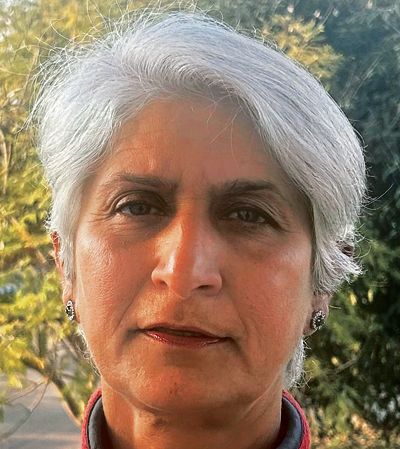How birds are woven into the fabric of beliefs and rituals
In many ancient cultures, mythology and nature are deeply entwined. Ancient people followed what is today known as Paganism. They worshipped the elements which were strange and inexplicable to them to calm natural occurrences beyond their understanding. In Indian mythology, trees, animals and birds are intrinsically woven into the fabric of beliefs, rituals and worship. Birds, especially, have been associated with several Indian gods and goddesses, holding a position of importance in religious and cultural practices.
Feeding crows during the period of Shraadh is a common practice in many regions in India. It is believed that crows are messengers connecting the world of the living with that of their departed ancestors.
Garuda, an eagle-like creature, is closely associated with Lord Vishnu as his vahana, symbolising courage, strength, speed and loyalty.
Laxmi, the goddess of fortune and wealth, is seen riding a Barn Owl named Uluka. In many cultures, owls symbolise wisdom and the ability to discern hidden truths, attributes required to acquire great wealth.
The Indian Peacock is a bird of great beauty and symbolic significance. The peacock is associated with deities like Goddesses Laxmi and Saraswati, besides Lord Kartikeya. Lord Krishna wore a peacock feather in his hair.
As a symbol of such grace and elegance, this iconically beautiful bird holds a unique place in Indian mythology, culture and art.
Peacocks were feted by royals, and continue to be depicted in Indian art and architecture and in temples and textiles.
Today, the peacock has become synonymous with India. Interestingly, there are three species of peacocks in the world. One is endemic to the Congo in Africa, while the other two are found in India. Despite being a common sight, the beauty of the Indian Peacock never ceases to amaze.
It is believed that the bird’s iridescent colours have a divine origin and were bestowed upon the peacock by Lord Indra himself out of gratitude for saving his life.
Scientifically, the peacock gets its earthy rust and brown colours from the presence of melanin in the feathers. The iridescent colours, however, are a result of (structural colouration) the way light interacts with the feathers. Simplistically speaking, peacock feathers are made up of barbules coated with keratin. When light falls on the feathers, it refracts and reflects off the barbules, resulting in the shimmering hues of blue, green and violet — reminiscent of the magic pencil box of our childhood, which would change colour when moved at different angles.
The peacock dancing to the rhythm of raindrops is a sight to behold! With a bevy of females looking on, he launches into his dance of love. Its beautiful long train with the hypnotic ocelli (eye-like patterns) come to life as it sways and shivers, mesmerising potential mates.
Though the peahen is rather drab, it supports a beautiful crest like the peacock. There is a purpose to nature’s ways. Peahens lay their eggs in a shallow dugout on the ground. The dull-coloured feathers help in camouflaging the bird while it incubates the eggs. The peachicks are nidifugous. Like hatchlings of other ground-nesting species, they are born with fine feathers covering their bodies. They are up and running as soon as they hatch. Like all species of fowls, a peacock lives with a harem of several breeding females.
It is unfortunate that in spite of our ancestors venerating birds to the extent of giving them godlike status, the modern world does not accord them the same reverence. Several wild species of birds are persecuted in the name of the very rituals for which they are worshipped.
During religious festivals, many owl species — Barn Owls, Eagle Owls, Scops Owls — are trapped and sacrificed in the belief that having lost her vahana, Goddess Laxmi (wealth) will continue to be in their homes. Similarly, the demand for the peacock’s train feathers also escalates during this time. Peacocks molt their old train once the mating season is over. These feathers can be gathered ethically as they lie scattered on the ground. Unfortunately, there is no deterrent to greed. The demand for these feathers is so great that illegal poaching of the bird becomes a grave threat to its existence.
In 1963, Indian Peacock was officially selected as the National Bird of India over the Great Indian Bustard while replacing the Indian Vulture. The peacock became a symbol of beauty and cultural heritage. This status accorded the bird protection from hunting and poaching. The Great Indian Bustard was a loser in every respect. Today, its habitat is taken over by wind farms, its numbers are sadly depleted and it depends on captivity breeding.
In sacred reverence they once soared high
From regal heights to shadows they have crawled.
— The writer is president of the Chandigarh Bird Club









